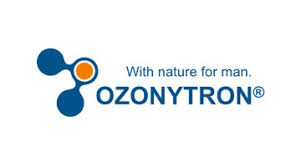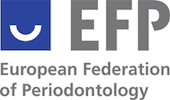How To Remove Your Dental Amalgam Fillings And Mercury Safely Using SMART Technique
Latest Techniques
Innovative Tech
Certified Experts
SMART Technique for Dental Amalgam and Mercury Removal
Are you concerned about mercury in your old metal fillings? Are you tired of discoloration that takes away the natural beauty of your smile? I fully understand your worries.
I remove amalgam fillings with safe techniques, so you can get rid of your old fillings while reducing your exposure to potentially harmful mercury vapors. Right afterward, you get immediate anatomic biocompatible tooth-colored composite direct restorations. Or a ceramic restoration in your next appointment, as you prefer.
So in one visit, your teeth will look white new, natural, and completely metal-free. And, very importantly, you will set the basis for heavy metal detox in the following weeks.
SMART amalgam removal stands for the “Safe Mercury Removal Technique,” developed by the IAOMT – International Academy of Oral Medicine and Toxicology. To this technique, I add a few more layers of safety to avoid the infiltration of mercury during the removal of the metallic restorations, plus a few other tips to enhance the elimination of mercury from your body.
If you are interested in learning more about a smart and safe dental amalgam and mercury removal, then please read on. These are the topics which I will cover:
- What are dental amalgams?
- Why did dentists come up with the idea of using mercury to restore teeth?
- How does mercury from amalgam restorations get into your body?
- Direct penetration into the tooth structure or gums
- Release of amalgam fragments from fillings
- Elemental Mercury vapor
- What effects do amalgam fillings have on our body?
- Allergy
- Galvanism
- Toxicity
- Chronic diseases caused by mercury and other heavy metals
- How to measure mercury toxicity
- How can I remove my dental amalgam mercury fillings safely?
- Preparation for the removal therapy
- Protection against amalgam particles and mercury vapor
- Restoration of the tooth
- Final cleansing
- Continue to detox
- Which side of the mouth should we start with?
- The Ying-Yang quadrant sequence for men or women
- Conclusions
What are dental amalgams?
You probably wonder why you got such amalgam restoration at first instance, right? As a matter of fact, I learned to do amalgam restorations in dental school in the 1990s. At that time, the dental medicine societies presented “silver amalgams” as the primary option because of their durability, leaving composite restorations as a second option.
In fact, calling them “silver amalgams” was a paradox since the major component was 50% mercury. Followed by silver (~22–32%), tin (~14%), zinc (~8%), and other trace metals like copper, indium, or palladium. I guess “Olympic silver” was a nicer metal to wear in your mouth than toxic mercury, so the dental industry marketed them as silver amalgams” instead of “mercury amalgams.”
Although dental amalgam restorations can last many years, their toxic effects on the body are very damaging. In fact, in more and more countries, dentists are not allowed to throw the amalgam disposals into the regular garbage or down the drain due to environmental contamination. But they are still allowed to use them on patients!
Why did dentists come up with the idea of using mercury to restore teeth?
The first dental amalgam restorations were used in ancient China during the Tang Dynasty (AD 618–907) but without mercury. The recipe for the use of mercury was published during the Ming Dynasty, and the spread in Western dentistry started in the mid-1800s.
Mercury amalgam was easier to use and much cheaper than gold restorations, which not every patient could afford. The other options were cement fillings, not so long-lasting. Unfortunately for patients, although many could keep their teeth for a longer time, mercury proved to be the 5th most toxic metal after plutonium, polonium, cesium, and arsenic.
Still today, the American Dental Association states on its website that “Dental amalgam is a safe, affordable and durable restorative material.” with a few other vague statements about its safety.
Nowadays, still only a few countries forbid the use of mercury amalgam restorations. Still, more and more countries demand dentists to have a special filter for amalgam residues connected to the aspiration pipe coming out of the dental chair. This filter, when saturated, needs to be collected by a company in charge of dangerous waste disposal. But those same countries demanding special waste disposal still allow amalgam restorations!
How does mercury from amalgam restorations get into your body?
Mercury is unstable. At room temperature, it is fluid but with a strong tendency to evaporate, becoming gas.
There are two forms of mercury:
- Organic mercury (MeHg) is well absorbed in the intestine and distributes quickly to the kidneys, liver, brain, and body fat
- Inorganic mercury (Hg2+) is poorly absorbed and therefore not so dangerous.
There are three ways in which organic mercury (MeHg) from amalgam restorations can get into your body:
1. Direct penetration into the tooth structure or gums
Elemental mercury can move directly into the tooth through the dentinal tubules, into the jawbone, and adjacent gums by direct contact. From there, the bloodstream distributes elemental mercury throughout the body.
2. Release of amalgam fragments from fillings
-
- By friction during chewing: Small or microscopic fragments can come off while chewing. Or larger pieces can break away from the filling if the restoration is leaking or coming apart. The patient swallows the mercury fragments, thus entering the digestive tract, although most of them are excreted. However, some intestinal bacteria convert elemental mercury into organic mercury compounds. These are well absorbed and spread throughout the body via the bloodstream.
- The less soluble inorganic form of mercury also gets released from the normal wear of dental amalgams (Patterson et al., 1985; Ucar and Brantley, 2011).
- Chemical processes: Acidic carbonated drinks and sugars -turned to acids by bacteria in the mouth-, attack amalgams and release mercury ions. This happens more intensively with the help of hot food or drinks.
- Electrochemical processes: Saliva acts as the electrolyte solution between other metallic dental materials in the mouth. In addition to amalgam, or amalgams of different brands and compositions, or amalgams of different ages. Mercury ions (Hg+ and Hg 2+) get dissolved and swallowed with the saliva.
3. Elemental Mercury vapor
-
- Elemental mercury vapor is primarily released during the process of placing the amalgam filling.
- It is also release from amalgam fillings while consuming hot drinks or foods (Patterson et al., 1985).
- Chewing and brushing also release small amounts of elemental mercury vapor (Ucar and Brantley, 2011), especially if you use chewing gum frequently (Sällsten et al., 1996).
- It is absorbed almost entirely through the lungs. Elemental mercury vapor is highly soluble. It crosses into the alveolar membranes and enters the blood quickly (Xibiao et al., 2008)
- Finally, high concentrations of mercury vapor are also produced during the removal of amalgam fillings. This cannot be avoided. Yet, it can be controlled, so it doesn’t get into the patient’s body back again nor into the operator’s body.
Either swallowed or breathed, mercury is well absorbed and distributed throughout the body by the bloodstream. Bacteria from the gut convert mercury ions into organometallic compounds such as methylmercury. These organic mercury compounds are highly fat-soluble.
They cross the brain barrier into the brain or the placental barrier (transferring from mother to fetus). Mercury is stored in the liver, kidneys, brain, large intestine, central nervous system, as well as in adipose tissue and the thyroid gland.
What effects do amalgam fillings have on our body?
Amalgam restorations can produce three types of adverse effects:
1. Allergy
-
-
- In the mouth, the gum may turn red around the amalgam fillings and get swollen. The tooth nerve may develop chronic inflammation and die after some years (necrosis) and causing an infection around the root.
- On the body, such allergies may be experienced in the form of different diseases o as rashes on the skin or even Psoriasis as the expression of a background allergy.
-
2. Galvanism
-
-
- When there are other metallic dental materials in the mouth besides amalgam, the mouth turns into a walking battery, with saliva acting as the electrolyte. The voltage in the mouth can become up to 100.000 times the normal voltage of nerve cells. This interferes with the energy meridians of the body, which may end up causing neurological and vegetative disorders over the years.
-
3. Toxicity
-
- Mercury forms compounds by binding to the sulfur and nitrogen of enzymes. This alters the structure of the enzymes and inhibits their activity and the function of different organs and systems in the body, from the immune system to nerve cells.
Many studies still claim that amalgam restorations are safe, not reaching toxicity levels in the studies, therefore still recommending their use.
While more and more countries are banning amalgam as restoration material in dentistry, still about 340 tons of mercury are used yearly in dentistry worldwide, representing 1/5 of all mercury used on the planet. Do we really need to use 340 tons of mercury every year when we have other excellent restoration materials?
Most of the short-term studies are done on children who have not had time to develop the side effects of long-term exposure to amalgam restorations. So many studies are done on children because they are all together at school, therefore easy to explore and carry out such studies.
Chronic diseases caused by mercury and other heavy metals
On the other side, there are also studies reporting chronic heavy metal toxicity, damage of the immune system, blocking of the body’s regulatory functions, chronic inflammation, neurologic and muscular disturbances like:
- Myasthenia Gravis,
- Fibromyalgia,
- Multiple Sclerosis
- Chronic Fatigue
- Parkinson (1583 times more risk),
- Alzheimer (1132 times more risk),
All are coming from dental amalgam restorations.
In addition, a person does not need to reach a clinical state of illness to simply feel bad but not knowing yet why.
- Quite a few patients without any symptoms start feeling much better after the heavy metals are eliminated from the body.
- Other patients have unspecific symptoms, also common to other diseases. Therefore these common symptoms are not attributed to mercury toxicity, especially if the blood or urine levels do not point out a toxic concentration according to the medical standards.
- Such generic symptoms are head and neck pains, gastrointestinal disorders, or nervous system disturbances (shiverings or vertigo).
School medicine identifies diseases usually when it is too late after they reach symptomatic levels. However, sub-symptomatic levels of intoxication do perturb body functions, making the person underperform and feel tired without knowing why.
How to measure mercury toxicity
Many dysfunctions cannot be measured with conventional school medicine methods, like blood and urine analysis. Mercury urine and blood concentrations do not necessarily relate to the amount of mercury contained in the tissues (Mutter et al., 2004; Melchart et al., 2008).
Some methods, like bio-resonance, are used for the detection of heavy metals in water or food at the industrial level (Odobasic et al., 2019). But in the field of medicine, bio-resonance -a physical method to detect materials through frequency connecting electrodes- is not accepted as the standard for the measurement of the total amount of oligo-elements or toxins in the body out of urine and blood.
In my practice, I have a quantum resonance analyzer. I use it to assess the start levels before removing the metallic restorations and eliminating the heavy metals from the body. We use it several weeks after the therapy to compare the start and finish levels.
Also, I perform a kinesiology test by applying a small sample of amalgam close to the body and testing the reflex of the patient’s extended arm.
So you probably think by now, how can I get rid of my mercury amalgams safely?
How can I remove my dental amalgam mercury fillings safely?
In my office, I safely remove amalgam fillings by adding several layers of security, applying the SMART protocol, plus a few other extras on top.
You would think the primary concern is not to swallow the tiny fragments of amalgam coming out of the tooth restoration while being removed with the drill. But actually, the most dangerous is mercury vapor. The half-life in the brain is 16-30 years. That is, after 16-30 years, the concentration will be reduced to half if nothing is done to speed up its elimination, of course. We discuss that too.
This is one of the reasons why mercury is so hazardous, and the removal process requires special protective measures.
A. Preparation for the removal therapy
- Nutritional preparation: plenty of water, healthy fats, vegetables, and salads. I do not recommend food and drinks that require heavy work from the intestines, liver, pancreas. Avoid coffee, alcohol, tobacco, drugs, and fast carbohydrates.
- Nutritional supplements: specific for the removal of heavy metals, starting two weeks prior to the amalgam removal and at least two weeks after.
- Selenium, a crucial element for heavy metal removal by conjugation with Glutathione (GSH)
- Chlorella and Spirulina, both blue-green algae that contribute to the elimination of heavy metals.
- Zinc gluconate: Zinc is one of the most well-studied essential metals for alleviating heavy metal toxicity. It competes for the binding sites of metal absorptive and enzymatic proteins, among several other functions.
- Magnesium citrate: mercury increases the excretion of magnesium and calcium from the kidneys, leading to kidney damage and magnesium deficiency seen in mercury poisoning. Detoxing mercury with magnesium may induce the skin to act as a detox organ. In this case, you may experience some temporary changes in your skin.
- Omega3 Fish Oil: mercury sticks to fat. You have probably heard of fish being contaminated with mercury because mercury accumulates in fish oil. By taking filtered fish oil from certified producers, circulating free mercury in your body, mainly stuck in your body fat will be eliminated more easily. Plus, you will enjoy the numerous benefits of omega 3, something to include as a life-long dietary supplement.
- Frequency therapy: a few drops per day mixed in water of the saline solution Omnia, made by Herbalux Luxembourg. The principle is that each body organ works at a different vibration frequency. The saline solution is irradiated with a laser at the working frequency of the liver (55-60 Hz), the main organ in charge of eliminating toxins from the body. The bottle is transported in a non-radiation environment and must be kept in such conditions until consumed, away from sunlight and electromagnetic fields like electric outlets, mobile phones, etc.
B. Protection against amalgam particles and mercury vapor
- Stomach protection: Chlorella+Spirulina+Omega 3 Fish Oil intake right before starting the dental procedure to prepare neutralization of eventually swallowed particles or amalgam.
- Oral mucosa protection: rinsing with 10% Sodium Thiosulphate (Na2S2O3-5H20), a chelating (neutralizing) agent used in emergency medicine for acute poisoning with diverse toxics that neutralizes the mercury or with a Chlorella+Spirulina solution.
- Air ventilation: fresh air ventilation in the treatment room, with open doors and windows.
- Eye protection: swimming goggles to tightly protect the mucose of the eyes. If you have swimming goggles, please bring them. They are likely to fit better and more comfortably than the ones we can lend you.
- Isolation: placing a flexible rubber dam is placed surrounding the set of teeth on the work area. This prevents fragments and tiny powder from getting stuck inside the gum tissue or the mouth. But also from being aspirated or swallowed. It also prevents gaseous mercury from getting into the mouth.
- Aspiration #1: Clean-up® suction cannula placed surrounding the tooth. Particles and vapor get sucked by the laminar flow immediately near the tooth amalgam.
- Aspiration #2: water suction cannula for the remaining refrigeration water used to cool the tooth while drilling.
- Aspiration #3: an aspiration unit to suck leftovers of vapor, held around the working area right outside the mouth. The air sucked goes to a HEPA filter category 14.
- Breath protection #1: oxygen supply through a nasal cannula. Oxygen oxidizes mercury, provides additional protection against free mercury vapor inhalation into the lungs.
- Breath protection #2: nose filter to shield against mercury vapor towards the nose.
- Our patient wears a gold-coated mask that traps to catch mercury vapors. Gold and mercury have a high affinity for each other. When mercury vapors reach the surface of the mask, it gets bound to the gold permanently. This prevents the mercury from evaporating over time. The nose clip sits on the nose, under the eyes. A triple layer of gold bevel seals the mouth. Another good and cheaper alternative is a respirator mask with protection class FFP3, but these masks are more challenging to place tight over the nose (learn more about the mercury-gold relationship in this video).
- The dentist also wears a gold-coated mask over an FFP3 mask, surgical cap, and a protection dress.
- Head protection: a towel covering the head of the patient or else swimming goggles and a surgical cap covering the hair.
C. Dental amalgam and mercury removal
- Drilling #1: Slow drilling, low pressure, high-refrigeration drilling procedure to avoid high temperatures that generate more vapor. No air turbine at 350000rpm, but contra-angle handpiece at 30000rpm instead.
- Drilling #2: we use an extremely sharp, disposable carbide drill (not a diamond drill!)
- Drilling #3: we try to “drill around” the filling to break it into pieces if possible, and remove the fragments with pliers.
- Dentine-Enamel Detox: using 2,5x or 3,5x magnifying loupes to see tiny details, I remove the underfills and discolored dentin or enamel with rests of amalgam corrosion. I apply a caries detector dye right after like for a regular caries detox procedure, including ozone plasma application.
D. Restoration of the tooth
- Restoration: depending on your needs and wishes, you get a direct composite restoration, a scan or an impression made for an indirect ceramic restoration, or a provisory cement filling (glass ionomer).
- Thorough spraying of the oral mucosa after removing the rubber dam shield.
E. Final cleansing
- Mouth rinse again with a 10% sodium thiosulphate solution or Chlorella+Spirulina to bind elemental mercury.
- Drink plenty of water but no alcohol nor coffee. Avoid smoking.
- Follow up with a professional in environmental or alternative care physician for individualized care.
- Room cleaning and disinfection: there is persistent mercury contamination in every dental practice where amalgam removal treatment is carried out. The vapor cloud generated during the removal treatment of amalgam fillings spreads evenly over the room(s) and ranging from 2µg/m³ to 9µg/m³. According to the WHO, room air concentrations of up to 50 µg/m³ are not considered harmful. Studies show that when windows are open, concentration in the air decreases. But when the windows are closed, the value returns to the old level. This is because mercury deposits on room surfaces and releases into the room air depending on the vapor pressure. We do a thorough cleaning of all the room surfaces after the treatment and let plenty of time for ventilation before we treat the next patient.
F. Continue to detox
Keep the routine of nutrition, nutritional supplements, and frequency therapy for 2 to 4 weeks after the last appointment.
Which side of the mouth should we start with?
If you need to remove several amalgam restorations or metal crowns from your mouth, there are different opinions about the time frame. My recommendation is to do the heavy metal removal from one quadrant in one or two appointments.
We then wait a few days and observe how you feel. If you don’t feel any strangeness -which usually is the case-, we continue with the next quadrants as soon as possible, spacing a few days between quadrants for the body to recover.
The Ying-Yang quadrant sequence for men or women
If you have several chronic or acute infections or disturbance fields in your mouth, an important question is where to start. If you have acute pain, we will tackle that first.
However, if we can decide where to start, because they are either silent chronic infections or equally acute, we will try to follow a quadrant sequence according to the Ying-Yang Chinese science, which allows a deeper and faster relief of the immune system:
- Women: lower right > upper right > lower-left > upper left
- Men: lower left > upper left > lower right > upper right
Conclusions
Some people think so many levels of safety are exaggerated, and it is understandable. It also took me a long time to understand. I went from learning how to make amalgam restorations at dental school and use them in practice for 2 or 3 years, to start reading sources out of the mainstream media of the dental industry, to look for safety measures and stack them.
After seeing patients recover from shiverings no doctor hand an answer for, headaches, fatigue, and other chronic diseases, I became aware of the importance of removing all metals without letting the tiniest bit in.
Had I known this much earlier, I would have served my earlier patients much better. Unfortunately, this is not the knowledge from dental school and the dental industry. It took me a while to acquire it on my own in small chunks through continued education, primarily out of the dental field, and my own research, which I continue doing every year.
We provide you with all the supplements you need for the removal of the heavy metals from your mouth plus the physiologic evacuation from your body.
We are also happy to collaborate with your therapist and discuss the best to help you get rid of the heavy metals.
You have the chance now to benefit from this knowledge to improve your overall health, boost your energy and your wellness.
If you are interested in removing your dental amalgam fillings and mercury safely by using SMART technique, book an appointment now.










Book An Appointment
Call: +41 444 222 131
Forchstrasse 34, 8008 Zürich